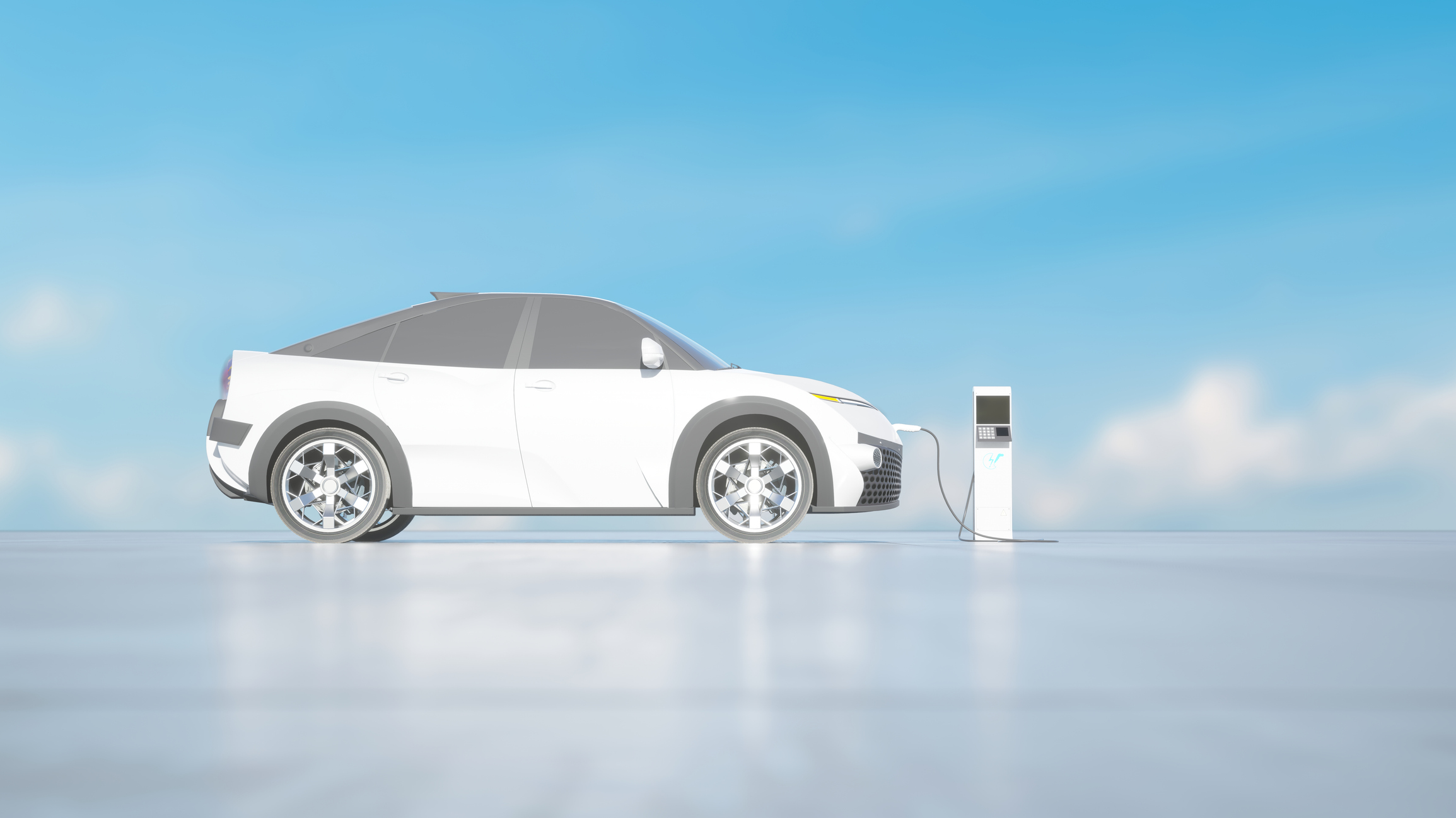5 Models That Show Hybrid Cars Might Be Right For You
Hybrids offer a fuel-saving option for drivers who have reservations about all-electric vehicles.


At a time when many consumers want to save on gas but aren’t ready to buy a fully electric car, hybrid vehicles — which use both gasoline and electric motors to make them go — are having a moment. The Kiplinger Letter forecasts that hybrids will account for 14% of vehicle sales in 2024, up from 9% in 2023.
That growth is taking place despite another round of buzzy product launches last year for fully electric cars, also known as battery electric vehicles (BEVs). Some went well; some were glitchy. Carmakers around the world threw money into electric-vehicle development, even as prospective car shoppers continued to fret about recharging availability, among other concerns. Amid all the hubbub, what Americans actually went out and bought was, increasingly, hybrids.
Carmakers are reacting, changing their model lineups to accommodate this trend. But is it a trend to follow? We’ll take a look at the motivations of some hybrid buyers and the merits of the vehicles — and recommend a few as well.
From just $107.88 $24.99 for Kiplinger Personal Finance
Become a smarter, better informed investor. Subscribe from just $107.88 $24.99, plus get up to 4 Special Issues

Sign up for Kiplinger’s Free Newsletters
Profit and prosper with the best of expert advice on investing, taxes, retirement, personal finance and more - straight to your e-mail.
Profit and prosper with the best of expert advice - straight to your e-mail.
But first, a review of how hybrids work. The car that started it all almost 25 years ago is the Toyota Prius, now in its fifth generation. The basic premise of a hybrid remains the same: A gas-burning engine is paired with an electric motor and a battery pack. The gas engine and the electric motor either take turns or work together to move the vehicle, depending on conditions. And the battery pack gets charged up either through regenerative braking (the electric motor runs in reverse as a generator when the car is slowing down) or by the gas engine. You can’t charge an ordinary hybrid vehicle by plugging it in.
How a plug-in hybrid electric vehicle (PHEV) operates is right there in the name: You take a hybrid and add the ability to plug it in to charge up the battery, which is itself bigger than it would be in a conventional hybrid (but far smaller than it would be in a BEV). This allows the vehicle to run on electric power alone for about 20 to 40 miles, depending on the model. Once the stored power drops too low, the car goes back to being a conventional hybrid.
A battery electric vehicle can be charged only by being plugged in. There’s no gas engine. Tesla is a well-known maker of BEVs, but most major carmakers produce them, and a dizzying array of new entrants are joining the market.
More than 80% of vehicles currently sold in the U.S. are neither hybrid nor fully electric. They’re gasoline-powered cars with only an internal combustion engine to propel them. Some of these conventional cars are becoming increasingly electrified, borrowing technology from hybrids to make them more fuel efficient. But those electric systems can only help move the car; they can’t power the vehicle on their own. Moving under electric power alone remains the hallmark of a true hybrid.
The hybrid car renaissance
So why now, amid all the hoopla for electric vehicles, did hybrids come into vogue? Car experts cite a number of factors, including better engineering. Keith Barry, a senior writer and editor based at the Consumer Reports Auto Test Center, notes that the hybrid version of a vehicle model often outscores the gas-only version in road tests, thanks in many cases to the instant torque from the electric motor. In other words, you can get better performance — more vroom — with a hybrid than with a gas-only model.
Buyers also have an improved selection of models to choose from. And the price premium for a hybrid compared with a gas-only model of the same vehicle has come down, which means that it takes fewer miles driven for fuel savings to compensate for the higher up-front cost. Plus, compared with buying a BEV, there’s not much of a learning curve.
“Buying or driving a hybrid does not require learning a new skill, finding a new place to refuel or installing new equipment,” says Brian Moody, an editor and analyst at Cox Automotive. “It just requires that you seek out a certain kind of car in the shopping process, then you drive it just like you always have.”
And the long-running reasons that buyers have chosen hybrids remain. Saving on fuel costs is the primary motivator for many, but the possibility of doing a good turn for the planet is a factor, too. “Environmental concerns are not necessarily the highest concern for most buyers — it’s usually cost — but buying a hybrid lets them do something green-minded while saving some money on gas,” says Barry. “A car that does more with less has sort of a universal appeal.”
To see an estimate of fuel cost savings with a hybrid version of a vehicle compared with its gas-only counterpart — including the number of years it’d take for fuel savings to make up for the initial price difference — try the calculator at www.fueleconomy.gov (click on “Can a Hybrid Save Me Money?”).
The almost-electric cars
If you’re on the fence about whether to buy a hybrid car or a fully electric vehicle, a plug-in hybrid might be a good compromise. PHEVs can be charged from the grid just like a BEV. A PHEV’s range on that stored electric power is far shorter than that of BEVs, given PHEVs’ much smaller batteries.
But because they’re also equipped with a gas-burning engine, PHEVs’ total range is immense, and extending it isn’t a question of finding somewhere to plug in — you can just fill up the tank. That addresses one of the chief concerns of EV shoppers: “range anxiety,” which is term of art for worrying about running out of electricity and being unable to easily recharge.
Cheryl Kitt, of St. Michaels, Md., is a self-described “nervous Nellie” who regularly travels across her state, which means crossing the four-mile-long Chesapeake Bay Bridge. “I wanted to get something with better gas mileage, but I didn’t want to go full electric because I did not want to be driving across that bridge on electric,” she says. “I’m the kind of person who fills up my gas tank when it’s half empty, and I didn’t want to give up that control.”
The solution to her range anxiety was a 2023 Volvo XC60 Recharge, a PHEV SUV. With dutiful home charging, most of her trips are run on electric power, and refueling stops are as much as 600 miles apart.
If you really want to max out the electric angle of a PHEV, that’s an option, too. Dennis and Alexandra Taylor, of Darien, Conn., were looking to expand their fleet when their teenage sons started driving. The boys wanted a greener choice, but the Taylors were wary of full electric vehicles, having seen friends struggle to find recharging options. They settled on a 2023 Subaru Crosstrek PHEV.
At first, they charged it only at night to take advantage of lower, off-peak electricity costs. But with the exigencies of high school life, they’re now sometimes recharging multiple times a day. When the car comes home, they plug it in. To speed things up, they are planning to install a 240-volt charger at their home, having so far relied on an ordinary 110-volt wall plug; charging the Crosstrek with it takes about four to five hours. They usually need to fill the tank only on road trips.
These two examples bear out a principle of life with a PHEV: To use one to its full potential, you have to charge it frequently. “For most plug-in hybrids to be practical, you have to plug them in every night,” says Joseph Yoon, consumer insights analyst for car website Edmunds.com. “If you can’t, it becomes kind of a pointless premium.”
That’s not only because a PHEV costs substantially more than a gas-only model (and more than a conventional hybrid, when a manufacturer offers all three flavors), but also because fitting the bigger and heavier battery that a PHEV requires can compromise cabin space, driving quality or both. Furthermore, some PHEVs have not lived up to their published economy figures in real-world driving, though this phenomenon appears most pronounced in pricey performance and luxury plug-ins that sell in low numbers.

More caveats: There are limitations on how purely electric you can go. If you need to floor it as you merge onto the highway, for example, there’s a good chance the gas engine will kick in to give you the necessary acceleration, even if you’re just a few miles from home with a full charge. Need to defog your windshield? The gas engine is going to come on to contribute heat to the process. How often these interventions occur is going to depend on the model, as well as the “drive mode” settings you can select yourself.
So, while PHEVs take range anxiety out of the equation, you’ll still have to consider factors such as your ability and willingness to plug in, how much of your driving you could realistically do on a charge, and even what you pay for electricity when trying to figure out whether one makes economic sense for you. Another substantial variable to consider: PHEVs are eligible for the same federal tax credits as BEVs (conventional hybrids don’t qualify). That could take $3,750, maybe even $7,500, off the price.
Yoon and others remain bullish on PHEVs’ promise as many car shoppers remain intrigued by electrification but unwilling to commit, at least for a vehicle purchase that needs to happen now. “For the general car-buying public, there are still some reservations about going full EV, but if they’re still interested in it, they can dabble with a plug-in,” Yoon says.
If you can’t install a charger in your apartment or home but still want a vehicle that’s greener than a gasoline-powered car or truck, a conventional hybrid may be a better choice. A conventional hybrid also typically has a lower purchase price than the PHEV version of the same vehicle, although conventional models are less fuel-efficient and are not eligible for federal tax incentives.
Five hybrid cars worth a look
TOYOTA RAV4 HYBRID LE
$31,725
Toyota dominates the hybrid realm, thanks in part to pioneering the Prius, refining its drivetrain and expanding it to other models. Now the Toyota hybrid lineup also includes a minivan (Sienna), SUVs from compact to giant, and a pickup truck (Tundra). And even the vaunted Land Cruiser off-roader is now going hybrid. You can choose from standbys such as the Camry, Corolla and yes, the Prius (recently restyled), too.
We especially like the compact SUV RAV 4 hybrid because it’s a huge seller (more than 160,000 in 2023) and offers both regular hybrid and plug-in options. The premium for the hybrid version over the gas-only model is only $3,000 (using 2024 MSRPs for an LE edition), and it gets you all-wheel-drive to boot. Fuel economy is 30% better.
HONDA ACCORD SPORT HYBRID
$32,895
Accord shoppers used to have their choice between two turbocharged 4-cylinder engines, one larger with more output (and before that, there was a 6-cylinder option). Now there’s just the base 1.5-liter 4-cylinder, and if you want more horsepower, as well as the possibility of a “Sport” trim with wider tires, upgraded suspension and bigger brakes, the hybrid is your only choice. But the extra go comes with substantially better gas mileage: 48 miles per gallon combined, versus the gas model’s 32. That’s a whopping 50% improvement.
Honda’s structure for trim levels and pricing makes it hard to parse out the extra cost of choosing a hybrid over a gas-only version, but it’s telling that the hybrid drivetrain is standard in all the fancier models.
JEEP WRANGLER WILLYS 4xe
$56,030, eligible for $3,750 tax credit
Would you believe that a Jeep is the biggest-selling PHEV in the U.S.?
Adding to the singularity, Jeep claims that the electrification doesn’t compromise the Wrangler’s vaunted off-road skills one bit, and plenty of testers who put it through its paces agree. The onboard battery also provides a power source for people camping off the grid.
Anticipating that owners might want to save charge for going off-road, the 4xe has an “eSave” mode that prioritizes the gas engine. This turns the PHEV model somewhat on its head, as you’re intentionally burning more gasoline to allow maximum use of electricity once you reach a trailhead. That’s because off-roading on electric power offers instant torque and a high degree of control to crawl over obstacles — and to do so in near-silence is a bonus.
If you want to follow the conventional PHEV behavior of plugging in and doing short trips on electric power, there’s a mode for that, too. If burning less gas generally is one of your goals, you’ll need to be dutiful about recharging, because the 4xe actually gets worse mileage than a regular 4-cylinder Wrangler. (On the other hand, the 4xe is far more powerful, and the comparison might best be made to the V-8 powered, limited-production Rubicon 392 model — which the 4xe utterly trounces on fuel mileage.)
If you buy a 4xe, a $3,750 tax credit is available. Go with a lease, and the financing company is likely to build in a $7,500 credit, making for significantly lower lease payments than you’d have with the regular Wrangler.
CHRYSLER PACIFICA PLUG-IN HYBRID SELECT
$50,960, eligible for $7,500 tax credit
Of the four remaining minivans available in the U.S. market, two are hybrids (for now). We’ve mentioned the Toyota Sienna, which is available only with a hybrid drivetrain. But minivan pioneer Chrysler is offering “America’s first and only plug-in hybrid minivan” — a version of the Pacifica.
The Environmental Protection Agency estimates you can drive it on electric power alone for 32 miles with a full charge. But minivans are often found on road trips far longer than that. Be reassured that even when you’ve used up every last watt you charged up on at home, the Pacifica still gets better mileage than its gas-only equivalent.
Another reason we recommend the Pacifica hybrid: It’s currently the only PHEV for which you can claim the full $7,500 tax credit if you purchase it (and meet the household income qualifications) rather than lease it.
That goes a long way toward recouping the hybrid model’s roughly $10,000 premium over the gas-only model. With disciplined plug-in use (and the PHEV’s inherently better gas mileage), you should be able to knock the balance down quickly.
Choosing the hybrid version of the Pacifica comes with a couple of drawbacks: The second-row seats don’t offer the vaunted “Stow and Go’’ feature of folding into the floor, and all-wheel drive is unavailable.
FORD MAVERICK XL
$23,815
This four-door pickup truck is small and super fuel efficient. Kudos to Ford (which knows a thing or two about trucks) for developing the Maverick even as it poured money into the all-electric F-150 Lightning.
For Ford, this is the little truck that could. It’s a runaway sales hit (the Lightning is not). Interestingly, there’s no separate “hybrid” model or trim. The hybrid is just a powertrain choice available on all trims — though only in front-wheel drive. It’s also at a horsepower disadvantage compared with the gas-only engine option, a turbocharged 4-cylinder.
The MSRP on a Maverick makes it one of the cheapest hybrids you can buy (it’s undercut by some small sedans, such as the Toyota Corolla hybrid). On the base XL trim, the hybrid will cost you a modest $1,500 more than the gas-only version. But the fuel economy (37 mpg) trounces that of the standard drivetrain (26 mpg) by 42%. If you drove 15,000 miles a year, paying an average of $3.50 a gallon, you’d recoup the price difference in just over two years.
Does a Maverick XL look a bit basic with its steel wheels? Well, yes. Pick a bright paint color and lean into your savings. Or, you could go nuts and buy the fanciest Lariat trim — in which case the hybrid drivetrain costs $720 less.
Note that you can also buy a Ford Escape compact SUV hybrid with essentially the same drivetrain. But it’s far more expensive, starting at $33,490. A plug-in hybrid Escape is also available, starting at $40,500; it’s eligible for a tax credit.
Note: This item first appeared in Kiplinger Personal Finance Magazine, a monthly, trustworthy source of advice and guidance. Subscribe to help you make more money and keep more of the money you make here.
Related Content
Profit and prosper with the best of Kiplinger's advice on investing, taxes, retirement, personal finance and much more. Delivered daily. Enter your email in the box and click Sign Me Up.

In his former role as Senior Online Editor, David edited and wrote a wide range of content for Kiplinger.com. With more than 20 years of experience with Kiplinger, David worked on numerous Kiplinger publications, including The Kiplinger Letter and Kiplinger’s Personal Finance magazine. He co-hosted Your Money's Worth, Kiplinger's podcast and helped develop the Economic Forecasts feature.
-
 Changes Are Coming for This Invesco Bond Fund
Changes Are Coming for This Invesco Bond FundThe Invesco BulletShares 2026 Corporate Bond ETF's bonds will mature in 2026. Here's what investors should do.
-
 What Science Reveals About Money and a Happy Retirement
What Science Reveals About Money and a Happy RetirementWhether you’re still planning or already retired, these research-based insights point the way to your best post-work life.
-
 7 Retirement Planning Trends: What They Mean for You in 2026
7 Retirement Planning Trends: What They Mean for You in 2026From government shutdowns to market swings, the past 12 months have been nothing if not eventful. The key trends can help you improve your own financial plan.
-
 How to Leave Different Amounts to Adult Children Without Causing a Rift
How to Leave Different Amounts to Adult Children Without Causing a RiftHere’s how to leave different amounts to adult children without causing a family rift.
-
 Introducing Your CD's Edgier Cousin: The Market-Linked CD
Introducing Your CD's Edgier Cousin: The Market-Linked CDTraditional CDs are a safe option for savers, but they don't always beat inflation. Should you try their counterparts, market-linked CDs, for better returns?
-
 How to Protect Yourself and Others From a Troubled Adult Child: A Lesson from Real Life
How to Protect Yourself and Others From a Troubled Adult Child: A Lesson from Real LifeThis case of a violent adult son whose parents are in denial is an example of the extreme risks some parents face if they neglect essential safety precautions.
-
 Here's How Much You Can Earn with a $100,000 Jumbo CD
Here's How Much You Can Earn with a $100,000 Jumbo CDYou might be surprised at how fast a jumbo CD helps you reach your goals.
-
 A Financial Planner Takes a Deep Dive Into How Charitable Trusts Benefit You and Your Favorite Charities
A Financial Planner Takes a Deep Dive Into How Charitable Trusts Benefit You and Your Favorite CharitiesThese dual-purpose tools let affluent families combine philanthropic goals with advanced tax planning to generate income, reduce estate taxes and preserve wealth.
-
 How Financial Advisers Can Best Help Widowed and Divorced Women
How Financial Advisers Can Best Help Widowed and Divorced WomenApproaching conversations with empathy and compassion is key to helping them find clarity and confidence and take control of their financial futures.
-
 Your Guide to Buying Art Online
Your Guide to Buying Art OnlineFrom virtual galleries to social media platforms, the internet offers plenty of places to shop for paintings, sculptures and other artwork without breaking the bank.
-
 I'm 59 With $1.7 Million Saved and Just Lost My Job. Should I Retire at 59½, or Find New Work?
I'm 59 With $1.7 Million Saved and Just Lost My Job. Should I Retire at 59½, or Find New Work?We asked professional wealth planners for advice.